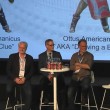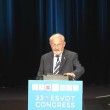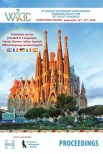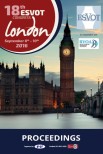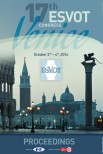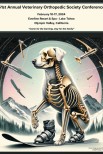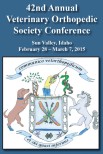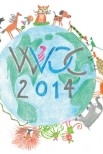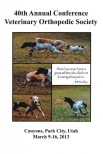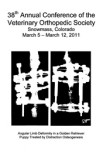Alessandro Piras
DVM - Specialist in Veterinary Surgery
Russi, Veterinary Referral Clinic and Canine Sport Medicine Center. Russi – Ravenna - Italy
Qualifications
Graduated in Turin Veterinary College in 1998. Gained Specialist in Veterinary Surgery status in 1993 after full time residency in College of Veterinary Medicine of Parma.
When and why did you decide that you wanted to become a Veterinarian?
Actually was quite funny because I wanted always to become Zorro. So when the time comes to go to College I was seriously disappointed because I discovered there wasn't a Zorro College so I decided that would have been good enough to study in order to become the Doc of Zorro's horse. Jokes a part I always had a passion for fixing anything was broken and since I was a young boy, all friends and neighbors used to bring to me any living creature that was rescued and even their pets. My first orthopedic intervention consisted in splinting the fractured tibia of a pet rabbit with two ice-cream wooden sticks. I was 6 years of age and my close friends say it was the beginning of my career.
Did anyone influence you decision and later did any Veterinarian mentor you during your University career?
I definitely did not have the privilege or fortune to have a Mentor during my college time. I can tell you that I wished to have one quite desperately because my desire to learn was burning, but it was a time where Professors where completely detached from human relationships with students and a mentor was just a romantic invention.
Fortunately in recent times the new generations of Professors are more illuminated.
But I must say that the very person that inspired and mentored me was a retired Veterinary surgeon that was a family friend and neighbor. His name was Dr. Giovanni Perinu. This guy was an hero to me and a very special person. He served in the Carabinieri army during the second war and he ended up in the Russian front. When Italy signed the armistice, every Italian become a traitor to the eyes of the Nazi, particularly the officers. He was Veterinary lieutenant and he was able to perform a rocambolesque escape and walked for 5 months to go back to Italy. Dr Perinu was indeed the one and only inspiration I had during my college time. When I graduated I had more luck and I had the fortune to meet 4 different persons and, each one in their own way, inspired me so much that I feel gratitude for them. They: were Professor Addis, Professor Mortellaro, Professor Mark Bloomberg and Dr John Dee.
Have you invented any new Orthopedic techniques of which you are particularly proud?
Somehow every orthopedic surgeon has the ambition or dream to "invent" something and leave his name to an instrument or a technique and of course I am not immune to this "disease". I feel quite proud of having developed the skyline x-ray views and other special views for the diagnosis of fractures avulsions of distal extremities, and I presented my work in numerous conferences since the early nighties.
Working for 6 years in the Veterinary Expert Group of AOVET I have participated to the development the AO locking TPLO plate of various sizes, the jigs and the cutting guides. In the LCP plate I proposed the round hole at one end of the plate that now is extended to all the sizes of the veterinary line of that company. I designed in cooperation with another company a mini cuttable plate with stack holes placed at different intervals. This latest implant uniquely addresses the clinical needs in toy breed and exotics fractures. I have always been very privileged because cooperating in groups working on developments in the industry gave me the opportunity to pioneer new implants and techniques, some of which in time become established and are currently in use in practice. In recent times I contributed to the development of the CORA Based Tibial Osteotomy together with Don Hulse and Brian Beale. I am quite proud of this as it comes from a brainstorm we had in Davos few years ago and it developed, thanks to the great leading work of Don, to a technique that is attracting a lot of interest and is very promising in addressing specific clinical needs in case of Cranial Cruciate ligament rupture particularly in case of excessive slope, in juvenile patients and in toy breeds.
